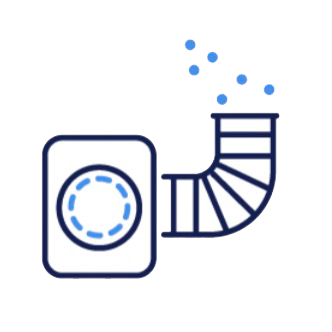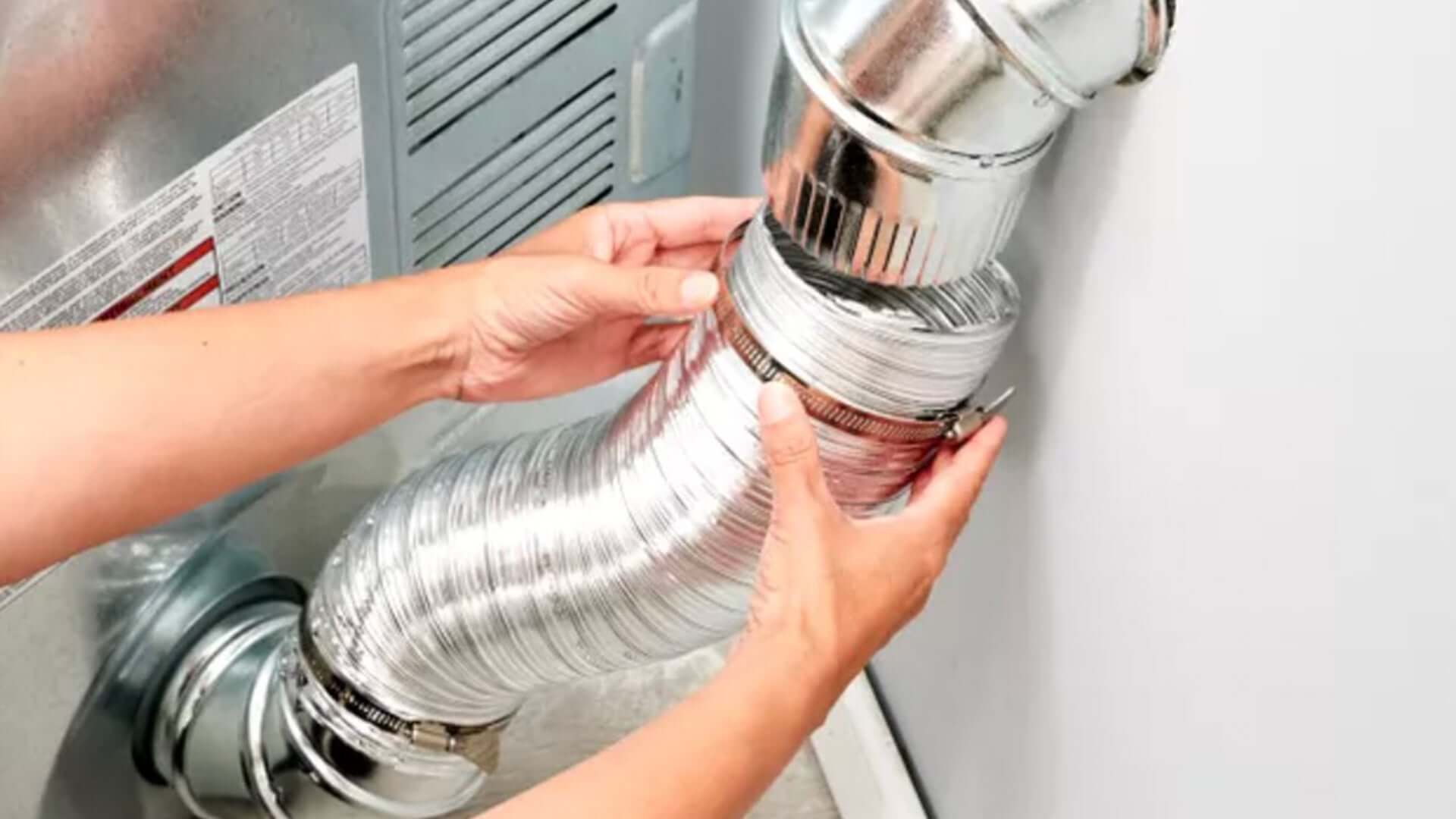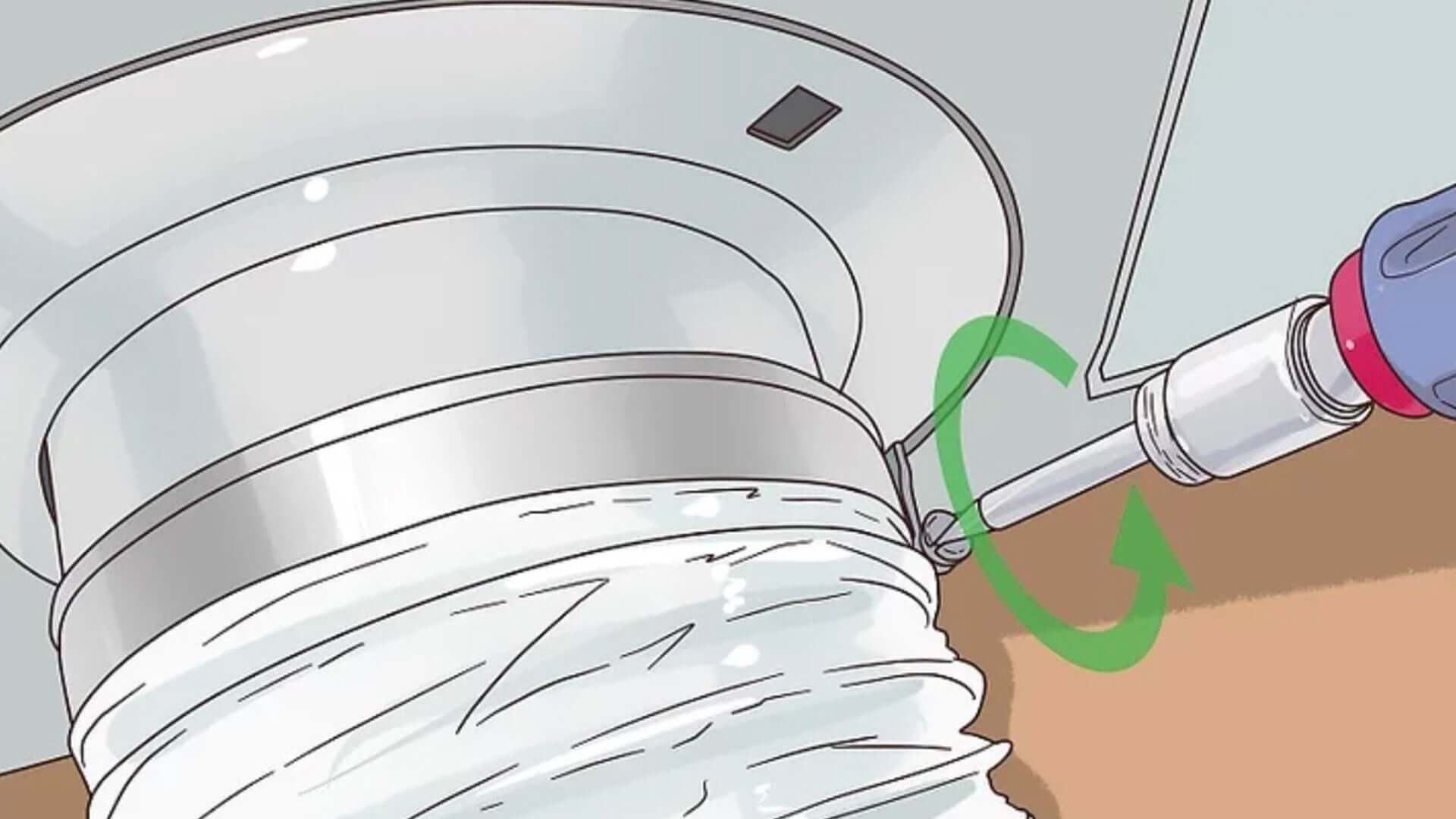The Importance of Proper Dryer Venting
Efficiency
Proper dryer venting ensures that moist air is efficiently expelled from the dryer to the outside. This not only helps the dryer operate more efficiently but also reduces drying times, saving both energy and money.
Safety
Lint is highly flammable, and improper venting can cause lint to accumulate in the vent hose and the dryer itself. This buildup significantly increases the risk of fire. According to the U.S. Fire Administration, failure to clean dryer vents is the leading cause of clothes dryer fires.
Indoor Air Quality
Improper venting can cause moisture and lint to be released into your home, leading to poor indoor air quality, mold growth, and potential respiratory issues.
Proper Dryer Venting
Materials
● Rigid Metal Ducts: Rigid or semi-rigid metal ducts are the best choice for dryer venting. They provide a smooth interior surface that allows air and lint to pass through with minimal resistance. They are also more durable and less prone to crushing compared to flexible ducts.
● Flexible Metal Ducts: These can be used for short distances and tight spaces where rigid ducts cannot fit. Ensure they are fully extended and not crushed or kinked.
Installation
● Shortest and Straightest Path: The vent duct should take the shortest and straightest path possible from the dryer to the exterior of the home. Long or convoluted paths increase resistance and reduce efficiency.
● No Screened Vents: Exterior vent caps should not have screens that can trap lint. Instead, use a vent cap with a damper that opens to let air out and closes when the dryer is not in use.
● Secure Connections: All connections should be secured with metal foil tape, not duct tape, which can degrade over time. Ensure that all joints are tight and properly aligned to prevent leaks.
● Proper Termination: The vent should terminate outside the house, not in the attic, crawl space, or garage. The exhaust should be directed away from windows, doors, and other openings to prevent recirculating moist air back into the home.
Maintenance
● Regular Cleaning: Clean the lint trap before or after each load. Additionally, the entire vent system should be cleaned at least once a year to remove lint buildup.
● Inspections: Regularly inspect the vent system for damage, obstructions, or signs of wear. Replace any damaged sections promptly.
Improper Dryer Venting
Materials to Avoid
● Plastic Ducts: Plastic ducts are highly flammable and should never be used for dryer venting. They can also crush easily, leading to blockages and reduced airflow.
● Vinyl Ducts: Similar to plastic ducts, vinyl ducts are not suitable for dryer venting due to their flammability and tendency to crush.
Common Mistakes
● Long, Twisting Duct Runs: Long and twisting duct runs increase resistance and reduce airflow. This not only makes the dryer less efficient but also increases the risk of lint buildup and fire.
● Crushed or Kinked Ducts: Flexible ducts can easily become crushed or kinked, especially behind the dryer. This restricts airflow and can cause the dryer to overheat.
● Improper Termination: Venting into an attic, crawl space, or garage can cause moisture damage and poor air quality. It can also lead to mold growth and other health hazards.
● Using Duct Tape: Duct tape is not suitable for securing dryer vent connections. The adhesive can dry out and fail over time, leading to leaks and potential lint buildup.
Signs of Improper Venting
● Long Drying Times: If your dryer is taking longer than usual to dry clothes, it may indicate restricted airflow due to improper venting.
● Excess Lint: Finding excessive lint around the dryer or in the laundry area can be a sign of poor venting.
● Hot Dryer and Laundry Room: If the dryer and the laundry room feel excessively hot, it could indicate that the dryer is not venting properly.
Steps to Correct Improper Venting
Step 1: Assess Your Current Venting
Examine the existing venting system to identify any improper materials or configurations. Note any long runs, twists, or use of plastic or vinyl ducts.
Step 2: Replace Improper Materials
If your vent system includes plastic or vinyl ducts, replace them with rigid or semi-rigid metal ducts. Ensure that all connections are secure and properly aligned.
Step 3: Shorten and Straighten the Duct Run
Where possible, shorten the duct run and eliminate any unnecessary twists and turns. This will improve airflow and reduce the risk of lint buildup.
Step 4: Proper Termination
Ensure the vent terminates outside the home and not in an attic, crawl space, or garage. Install a proper vent cap with a damper to prevent lint buildup and keep out pests.
Step 5: Regular Maintenance
Implement a regular cleaning and maintenance schedule to keep the vent system free of lint and other obstructions. This includes cleaning the lint trap before or after each load and having the vent system professionally cleaned at least once a year.
Step 6: Monitor Performance
Keep an eye on the performance of your dryer. If you notice any signs of improper venting, such as long drying times or excessive lint, take action immediately to address the issue.
Conclusion
Proper venting of your clothes dryer is essential for maintaining efficiency, safety, and indoor air quality. By following best practices for vent installation and maintenance, you can ensure that your dryer operates effectively and reduce the risk of potential hazards. Regularly inspect and clean your vent system to keep it in optimal condition. Remember, a well-vented dryer not only saves energy and time but also enhances the safety of your home.



